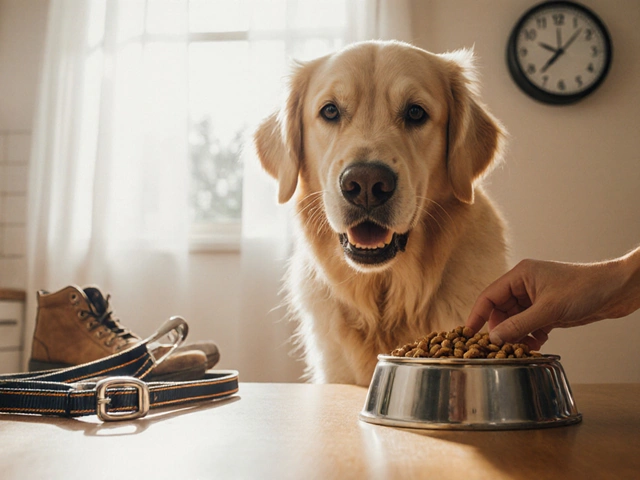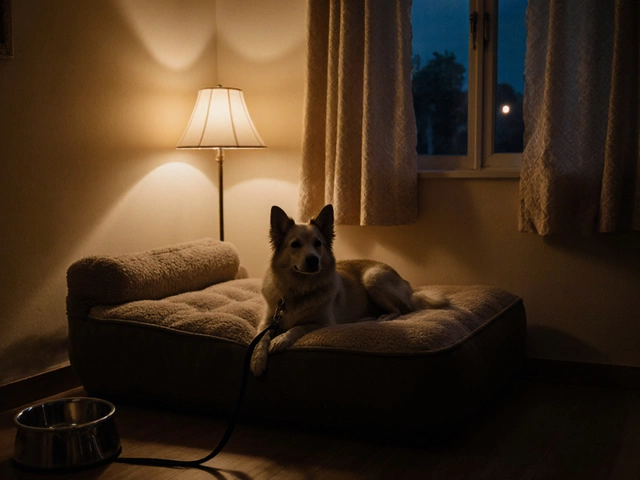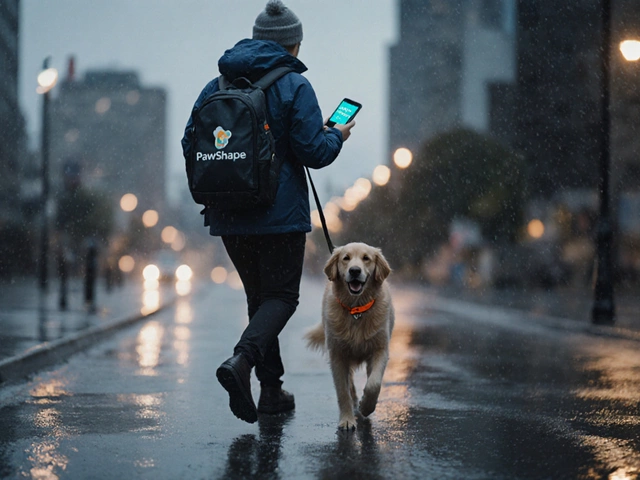
Ever wondered if you can just leave a pinch collar on your dog all day, so training happens on autopilot? You’re not alone. Tons of folks ask about this, especially after seeing how fast a stubborn pup responds to one during a walk. Here’s the shortcut answer: not a good idea, and there’s more to it than you might think.
Pinch collars look pretty hardcore, but their main job isn’t to punish—it’s to give a dog a quick, clear signal. Left on all day, these collars can actually cause pain, skin infections, and weird behavior problems. If you see redness, hair loss, or even your dog scratching at their neck, chances are you’re looking at the early signs that the collar’s been on too long. This isn’t just nitpicking—the skin under those prongs is really sensitive.
- What Pinch Collars Really Do
- The Dangers of All-Day Wear
- Trainer Insights and Safer Alternatives
- Tips for Responsible Collar Use
What Pinch Collars Really Do
Pinch collars—also called prong collars—look kind of scary, but they aren’t meant to hurt when they’re used the right way. Their prongs sit evenly around your dog’s neck, and when you give a gentle tug on the leash, those prongs pinch the skin just enough to get your dog’s attention. The feeling mimics what a mother dog would do with her mouth to correct her puppies.
The idea isn’t pain—it’s pressure. A pinch collar teaches your dog to stop pulling or lunging by providing instant feedback, which most dogs learn to respect pretty quickly. Trainers use these for big, strong, tough-to-control dogs, but only during short training sessions. The big keyword here is pinch collars, and how they’re all about timing and supervision, not constant pressure all day long.
One important fact: the design of a pinch collar means it spreads pressure evenly, unlike a regular choke chain that digs in at a single point. Still, that doesn’t make it safe for all-day wear. If left on, the prongs can rub and poke at your dog’s skin the whole time, leading to irritation, hot spots, or even wounds. Also, regular collars have quick-release buckles, but pinch collars don’t—so if your dog snags the collar on something, things can get dangerous fast.
Quick summary of what pinch collars actually do:
- They help fix leash-pulling or lunging by providing quick, even pressure.
- They’re meant for dog training with close supervision only—not daily wear.
- Used right, they’re a tool for learning, not punishment.
- Dogs should never wear one unattended or for long stretches of time.
The Dangers of All-Day Wear
If you keep a pinch collar on your dog all day, you’re asking for trouble—way more than you’d get with a regular flat collar. The prongs aren’t meant to rest on a dog’s neck for hours. They can actually dig in over time, especially if your dog lies down, scratches, or shifts around. That’s when stuff like chafing, pressure sores, or raw spots can start showing up, and you might not even notice until your dog suddenly yelps when you go for a walk.
There are actual cases out there where dogs have ended up needing treatment just because someone forgot to remove the collar after training. Skin infections, scabs, and even open wounds are possible. According to a 2024 pet health survey, dogs wearing pinch collars for more than four hours at a time had a 35% higher chance of developing skin problems compared to dogs who only wore them during training sessions. Here’s how those numbers break down:
| Pinch Collar Wear Time | Chance of Skin Issues |
|---|---|
| 1 hour or less (training only) | 6% |
| 2–4 hours | 21% |
| All day (over 6 hours) | 41% |
Beyond physical harm, dogs can start to develop anxiety or just shut down when the pinch collars are on for long stretches. Think about it—they can’t escape the pressure. Some pups even begin associating their owners or regular stuff like leash walks with pain or discomfort, and that’s the opposite of what anyone wants from training.
Another big risk? Getting caught. Unlike flat collars, pinch collars have prongs and links that can snag on crates, couch cushions, or play equipment. If that happens while you’re not watching, your dog could panic, twist, and injure themselves even more.
If you want to use a pinch collar as a training tool, think of it like a seatbelt: good for the right moment, but not 24/7. Save it for those times when you’re right there, paying attention, and working with your dog.

Trainer Insights and Safer Alternatives
Talk to any respected dog trainer, and you’ll hear the same thing: pinch collars are never meant for all-day use. Most pros use them just for short leash training sessions when teaching leash manners or correcting specific behaviors. Even then, they give clear instructions on fit and timing. One tip pro trainers repeat—never leave a pinch collar on an unsupervised dog. It can get caught on stuff, and your dog could hurt themselves trying to get loose.
Trainers have seen pinch collars mess up more than just a dog’s coat. Overuse can cause a dog to get nervous around collars or even act aggressive. And for shy or anxious pups, these collars can make things worse if used wrong. That’s why certified trainers usually try other ways first, only reaching for pinch collars as a last resort for really tough cases with strong, pulling dogs.
If you want safer alternatives, here’s what trainers often recommend:
- Flat collars: Basic, comfy, and good for everyday wear—they won’t pinch or hurt your dog’s neck.
- Martingale collars: Great for dogs who slip out of regular collars but don’t need the pinch. They tighten gently without digging in.
- Front-clip harnesses: These go around your dog’s chest and shoulders, making it way harder for a dog to pull, all without neck pressure.
- Step-by-step positive reinforcement: Clicker training, treats, and praise—building good habits slowly helps most dogs without any special collar at all.
The key thing trainers stress is use the tool that matches your dog’s needs, not just what’s trending online. And if you ever feel unsure about what’s best, a quick chat with your vet or a certified dog trainer can save a lot of trouble down the road.
Tips for Responsible Collar Use
When it comes to using a pinch collar, it’s all about knowing the right way to do it. You want to keep your dog safe and stress-free—not just obedient.
First rule: never leave a pinch collar on your dog when they’re unsupervised. These collars are meant for hands-on training sessions, not for all-day wear. Prongs can dig in, especially if your pup scratches, rolls, or plays with other dogs. That’s how injuries and infections happen—way more common than people think.
Always take the collar off after training. Most big trainer organizations agree: the collar should only be on for short bursts—15 to 30 minutes tops. If you’re just getting started, keep sessions even shorter to see how your dog reacts. Check your dog’s neck regularly for redness or missing fur. Even a tiny sore can get ugly fast if you’re not paying attention.
You’ll want to get the right fit, too. A good fit means it sits snug—high up, just behind the ears—but not pinching, and not loose enough to slide around. Measure your dog’s neck and follow size guides from reputable brands.
| Usage Tip | Why It Matters |
|---|---|
| Limit use to active training | Prevents injuries and bad habits |
| Always supervise | Stops accidents before they start |
| Check skin and fur daily | Early detection of problems |
| Use correct size and fit | Reduces risk of choking or discomfort |
If you’re looking for a good backup for walks, clip a regular flat collar and ID tag on your dog too. That way, if the pinch collar ever pops off, you’ve still got them on leash and safe. And remember, positive rewards always help reinforce good habits faster, especially once your dog knows what you’re asking for.
- Never use a pinch collar on puppies under six months.
- Keep collars clean by wiping them down after each use to avoid skin issues.
- Work with a pro trainer if you’re not sure how to use training collars.
Good collar habits save a lot of headaches—and they keep things positive for both you and your dog.





